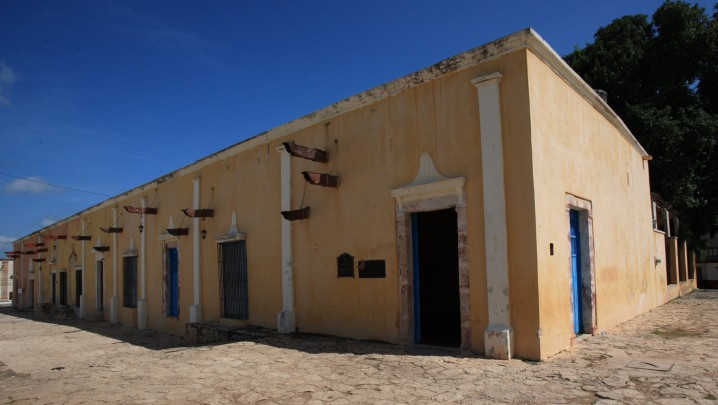The cities of Campeche and Merida were linked during the viceregal period by a road for carts and carriages called the Royal Road (Camino Real). It gradually fell into disuse with the appearance of the railway and paved roads. The name of the road was nevertheless preserved, as it was incorporated into the names of many towns in northwest Campeche. This museum contains pieces from several Mayan cities from the north of the state, particularly a rich collection of figurines from the island of Jaina and a good number of limestone sculptures, columns and stelae from northern Campeche.
The displays are organized around the Mayan region in the context of Mesoamerica. There is a special focus on the pre-Hispanic treasures from the municipality of Hecelchakan. Other display topics are the Mayan people and their characteristic traits, the art of pre-Hispanic textile weaving and the symbols of power in ancient Mayan society. There are also displays providing evidence of the ancient society’s exchange of trade goods over great distances. Obsidian, basalt, jadeite, pots from other regions and figurines from the shores of Tabasco and Veracruz were transported along shores, rivers and overland.
Another section looks at the important role played by Jaina during its period of dominance in the Late Classic (600-900 AD), with its enormous constructions and types of burials. This was also related to the Mayan view of the supernatural world, the way in which it was governed by specific entities, some of which featured in their creation myths.
There are sections on traditional dwellings and the evolution of structures from perishable materials used by the poor from ancient, colonial to modern times. In contrast, the sites of Xcalumkin and Xuelen, which are close to Hecelchakan, still have stonework structures standing, and are important because of other forms of Mayan expression such as hieroglyphic inscriptions and mural paintings.
The museum patio displays a varied collection of monoliths from recovery work carried out at various archeological sites in the north of Campeche such as Edzna, Itzimte, Miramar, Xcalumkin, Xchan, Xculoc and from Hecelchakan itself.







